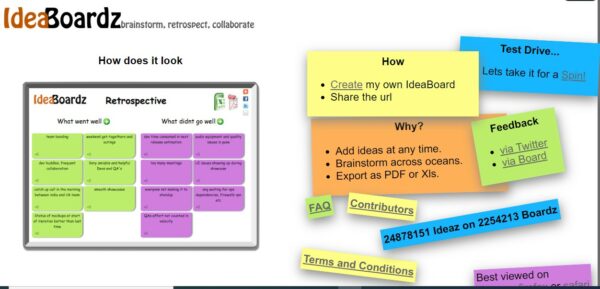As a team leader, you must know how to handle the group decision making process of the team. This is because you are often working with a lot of people and decisions can often get contaminated by biases, a tendency to please others in the group, pressure to act, and emotional reactivity. This is why you need to come up with a better strategy because your decisions affect the entire team and can affect the outcome of any project you are working on. Better decision-making techniques and strategies can better involve, engage, and motivate people, making decision outcomes more likely to succeed. That’s why we have compiled some amazing techniques in this blog post that will help you collaborate effectively with your team on decisions that matter.
What is Group Decision Making?

Group decision making or collective decision making is a process where an entire group of people make decisions, not an individual. The team leader brainstorms ideas and topics with the entire group and the best ideas are selected using various group decision making techniques which will be discussed in this article. This type of decision-making is often devoid of biases and the decision reflects the entire group.
Making decisions collectively can help your team in the following ways
- It can help your team make more informed decisions because each member is able to share their ideas and decisions can be made by voting on the best or through consensus
- It helps your team members have a sense of belonging which can motivate them to work more harder.
- Encourage workplace creativity and contribution by taking into account ideas from any individual or team, not just leadership or internal subject matter experts
- Create more favourable business outcomes by sharing decision-making responsibilities with everyone
Group Decision-Making Techniques Your Team Needs To know
1. Make sure everyone is on the same page
This is just like identifying and defining your goals in a team. As a team leader, the first thing you need to do is to make sure everybody in your team understands the decision to be made or what is expected of the group. The details involving the decision need to be completely spelt out so everybody is on the same page. No one should provide their opinion without first knowing what exactly the decision is regarding and who or what it impacts. Ask questions like What are the features of the assigned task? What are we being asked to do? What barrier to effective group work are we facing? Potential conflicts with no obvious resolution can also be pointed out.
2. Set Criteria for Success
Once you have analyzed and sorted out what decision needs to be made(goals), you can start looking for possible solutions and various strategies. You need to establish criteria that will help you measure how successful and reflective of the group a decision is. It can be ranked in order of importance. Ask yourself these questions. What would make a solution/decision successful? What issues need to be dealt with in the solution? What criteria will help us determine whether everyone is on board with the solution/decision? Are some criteria more necessary than others?
3. Start Brainstorming ideas
At this stage, each team members begin to generate ideas and solutions through critical thinking aiming at an expansion of possible options. The main goal of brainstorming is to come up with as many suggestions as possible and then decipher which idea may be the best approach. This technique aims at coming to a final decision by choosing the best idea for the most effective solution
4. Use The Delphi Method
The Delphi technique is a strategy that is used when you need to reach a group consensus for a major decision. This technique involves you as the team leader taking all of the ideas that have been generated by each team member and breaking them down into a smaller list of possible approaches. These fewer approaches are now taken back to the group for further discussion and collective deliberation. The idea here is to break ideas into fewer options, that way decisions can be reached more quickly with collective agreement from you and your team members.
5. Nominal Group Technique
This is related to the Delphi technique, however, instead of breaking the ideas generated by team members into smaller options, a vote is being cast to come up with the best ideas or solutions. With this technique, not only does a team member cast a vote, but they are given the opportunity to explain why they choose that particular idea as the best option. One thing to note about this type of technique is that it might not work well with a team that is sensitive or controversial as it might result in some sort of dispute or conflict. In this case, you might use a survey with the option to remain anonymous. Otherwise, this technique can be used during your meeting in an open discussion.
How to use the Norminal technique
- The first thing to do is to make sure that every member of the team understands the issue at hand so that everyone is on the same page.
- Each member of the team should brainstorm and write down their ideas(note that there is no limit to what you can write down)
- Each member of the team can read aloud their ideas or make use of group decision tools like Ideaboardz or online sticky notes and the leader of the session writes it on the whiteboard.
- Once all ideas have been contributed, the team will discuss each one together. If everyone agrees, ideas can be removed from the list, or the wording may be changed.
- The team will finally arrive with a refined list of solutions upon which the best will then be selacted
6. Weighted scoring
This group decision-making method is very useful in a situation where your team has many ideas for possible solutions and you need to think carefully about the consequences of each decision. The technique is predicated on the idea that some influencing factors might be riskier than others and therefore their implications need to be considered. Most team leaders often weigh those factors against criteria such as costs, risks, customer satisfaction, resources needed, time and business value. Each criterion is given a weighted score based on the risk or effect. You’re looking for an approach that will score high in business value, high in adoption, score low in cost, and low in risk. After weighing each idea, you can tally up the scores to make an informed team decision.
Best practices for group decision-making
A group decision is very important because each team member brings in their idea and the best of those ideas is eventually selected. This way, a better-informed decision is reached by the team which leads to success and great results. Here are some best practices to make collective decisions more effectively:
- Be clear about the decision being made
- Respect participants’ time
- Be mindful of deadlines or other time restrictions
- Be sure all opinions are respected
- Don’t allow one or two people to dominate all discussion
Tools for group decision-making
1. Using Simple Online Sticky Note Tools

An online sticky note is a small square paper cardboard that comes in different colours like Yellow, green and pink with writing on them which are pinned to a board. Remote Teams can add items all at once, and click to drag the notes around. This tool is very useful for remote workers who work from different parts of the world. Examples of software they can use include IdeaFlip, Lino.it and Jamboard.
For example, the Ideaflip software can help team members collaborate and quickly turn thoughts into ideas, and share and refine them whether they’re in the same room or on the other side of the world
2. Ideaboardz

IdeaBoardz is a team collaboration tool that allows teams to collectively brainstorm, gather inputs, reflect and have fun retrospectives. It is very useful for remote teams and comes in handy for collecting team input over days and then meeting to discuss them. With Ideaboardz, users can add sticky notes, known as Ideaz, to an IdeaBoard. Users can make an unlimited number of IdeaBoards based on different topics.
Features
- Team members can use IdeaBoardz as a collaboration tool to share their ideas
- Users can contribute to an IdeaBoard locally or globally.
- Multiple teammates can work on one IdeaBoardz together.
- IdeaBoardz supports social learning.
3. Google Jamboard
The Google jamboard is a digital whiteboard that lets you collaborate in real-time using either the Jamboard device which is a 55-inch digital whiteboard that works with G Suite services or a web browser or mobile app. With Google Jamboard, you can
- Write and draw using a mouse or trackpad.
- Drag and resize text and images.
- work well with other Google software like Google drive.
- Search Google and insert images or webpages.
- Present your jam to a Google Meet video call.
- Open your jam on a Jamboard device.
4. The Decision Tree
As a leader of a group or team, before a decision is made by the team, you can predict or anticipate the outcome of those decisions. The decision tree tool is a good technique that you can use to achieve that. It is a highly visual, and very intuitive, way to predict how certain decisions will turn out. You can take several potential decisions and run them through each step of the tree to help you decide whether it’s the right choice or not.
A decision tree starts with a single question right at the top or bottom of the page(like a root). Then nodes are added below the root with binary questions which challenge its assumptions or make alternative suggestions. After you have achieved a few branches leading to a few nodes, you can quickly develop a diagram resembling a tree. Once each of these branches reaches its natural conclusion, usually through several nodes, the final node is known as a leaf.
How to Come Up with a final decision
This article has covered group decision-making techniques and group decision-making tools. But what about how you arrive at a final conclusion. How do you know when a decision has been made?
Unfortunately, some of these decision-making techniques and tools might leave you with a few options. What are ways to decide what’s final?
Here are the most common group decision-making strategies your team could choose from:
- Unanimous decision. This is one of the best ways of reaching a final decision. Due to various decision-making techniques and tools mentioned above, there is always a high chance to find the final decision together. This way you can have every single member of a team come to the same decision which really reinforces the weight of the decision.
- Democratic Consensus. Each team member is a person with different ideas and opinions therefore it can be hard to get everybody onboard to agree to a particular decision. So what do you do? The most important method is to vote by consensus. This way, the decision that is selected by most of the team members is chosen as the final decision. Those who disagree must agree to accept the final decision to reach a consensus.
- The Executive Decision or leader’s decision. Sometimes, in a group, the decision-making process can fall into the hands of the leader. In this scenario, the leader will listen to all sides of the discussion, review the information provided by the group decision-making tools, and make a judgment call. This might sound a little bit autocratic, however, both sides or each team member have been given a chance to argue their point. Moreover, this is how many business decisions are made today.
Conclusion
Group decision-making might take time to implement because it involves a lot of people and people have to deliberate on ideas and solutions. But group decision is still one of the best types of decision-making processes. And with the techniques and tools that have been analyzed above, you can make better-informed decisions. Although, following these steps doesn’t guarantee a great decision. However, the better the quality of the decision-making process and the interaction between the group members, the greater your chances of reaching a successful outcome.







